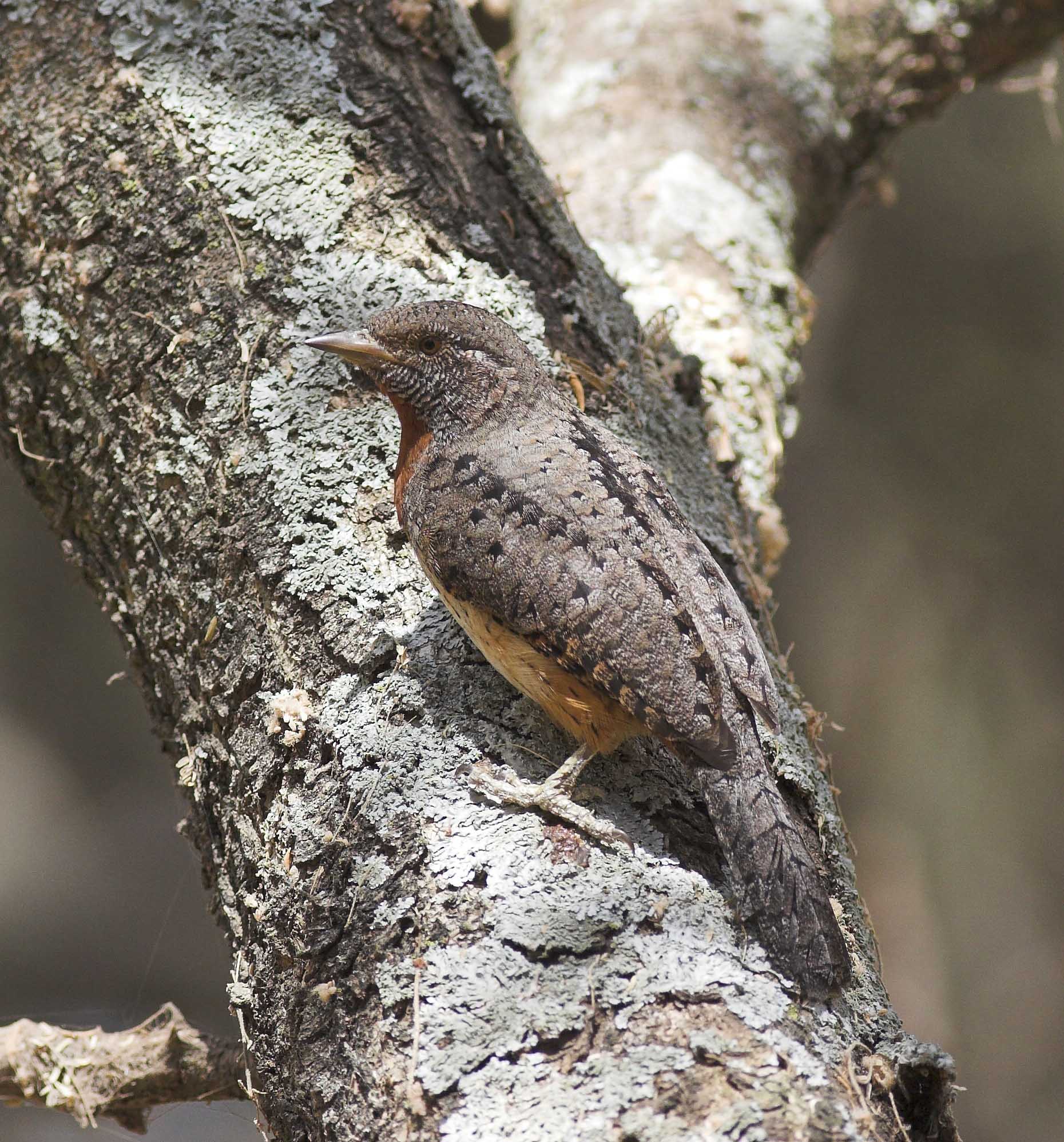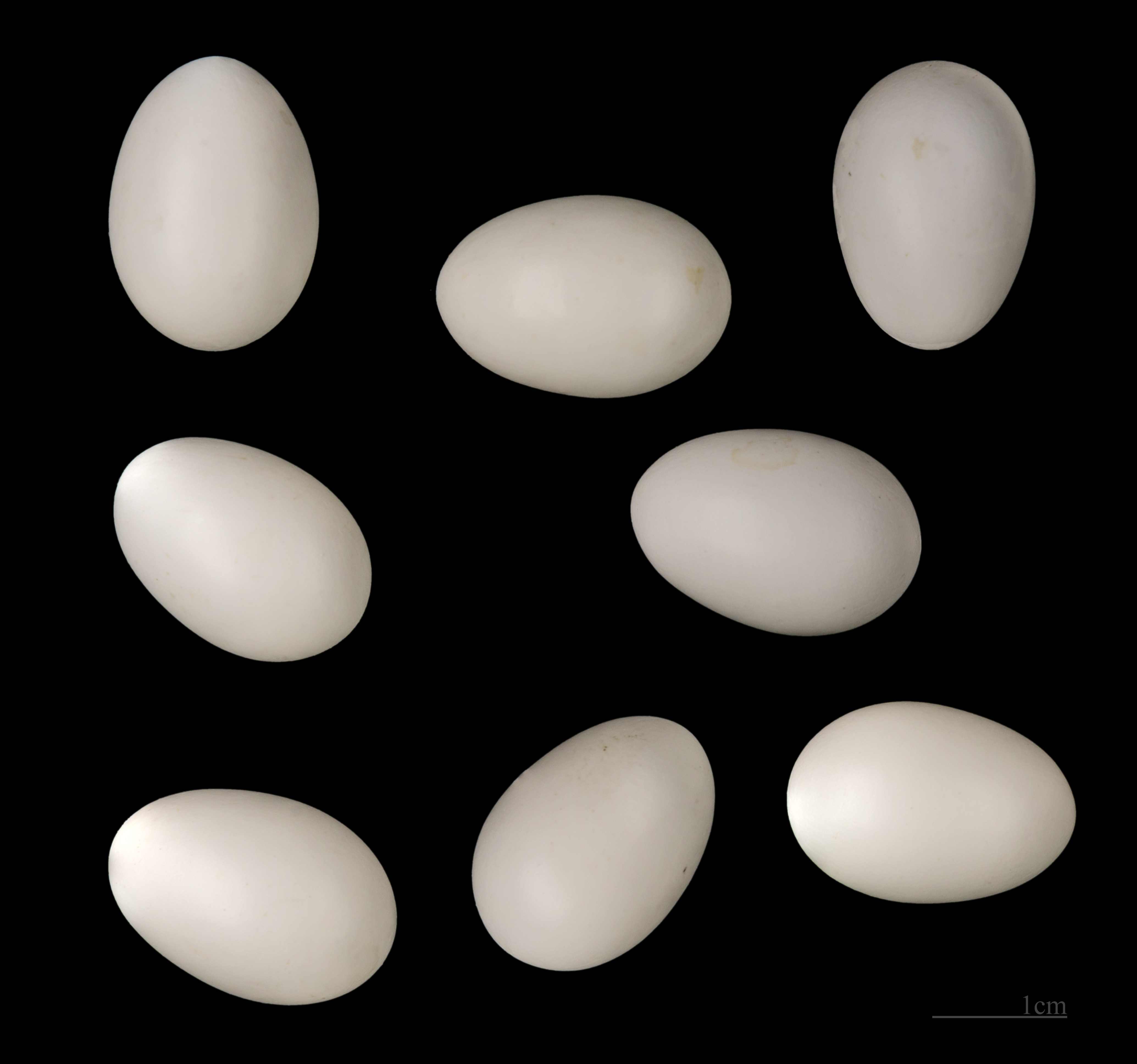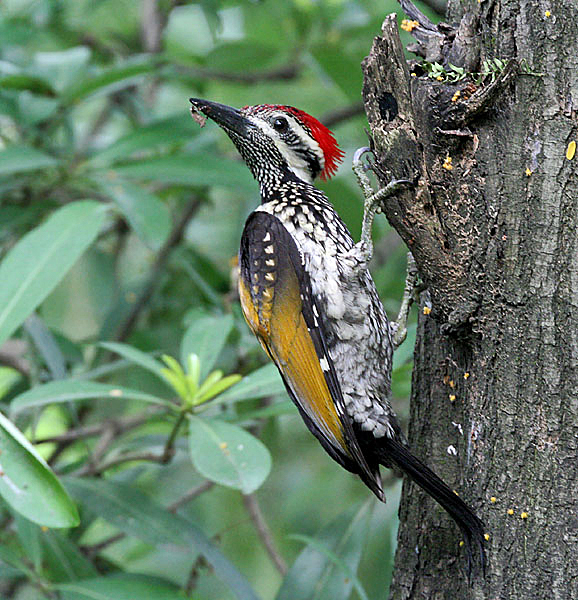|
Wryneck
The wrynecks (genus ''Jynx'') are a small but distinctive group of small Old World woodpeckers. ''Jynx'' is from the Ancient Greek ''iunx'', the Eurasian wryneck. These birds get their English name from their ability to turn their heads almost 180°. When disturbed at the nest, they use this snake-like head twisting and hissing as a threat display. It has occasionally been called "snake-bird" for that reason. Like the true woodpeckers, wrynecks have large heads, long tongues, which they use to extract their insect prey, and zygodactyl feet, with two toes pointing forward and two backwards, but they lack the stiff tail feathers that the true woodpeckers use when climbing trees, so they are more likely than their relatives to perch on a branch rather than an upright trunk. The sexes have a similar appearance. Their bills are shorter and less dagger-like than in the true woodpeckers, but their chief prey is ants and other insects, which they find in decaying wood or almost bare ... [...More Info...] [...Related Items...] OR: [Wikipedia] [Google] [Baidu] |
Jynx Ruficollis
The red-throated wryneck (''Jynx ruficollis''), also known as the rufous-necked wryneck or red-breasted wryneck, is a species of wryneck in the Picidae, woodpecker family closely related to the Eurasian wryneck. Its three subspecies are resident in much of sub-Saharan Africa in open habitats with some trees. It is a slim, elongated bird about in length, with a small head, fine bill, long fan-shaped tail and Crypsis, cryptic plumage intricately patterned in greys and browns. The sexes look similar, although males are slightly larger. The diet of the adults and young is almost entirely ants at all stages of their Biological life cycle, life cycles. The call of the red-throated wryneck is a series of repeated harsh, shrill notes. When threatened, a bird will twist its neck and head in a snake-like manner while making a hissing sound, presumably to Anti-predator adaptation#Warding off attack, deter predators. The red-throated wryneck nests in pre-existing holes, usually in trees, pr ... [...More Info...] [...Related Items...] OR: [Wikipedia] [Google] [Baidu] |
Eurasian Wryneck
The Eurasian wryneck or northern wryneck (''Jynx torquilla'') is a species of wryneck in the woodpecker Family (biology), family. They mainly breed in temperate regions of Europe and Asia. Most populations are bird migration, migratory, wintering in tropical Africa and in southern Asia from Iran to the Indian subcontinent, but some are resident in northwestern Africa. It is a bird of open countryside, woodland and orchards. Eurasian wrynecks measure about in length and have bills shorter and less dagger-like than those of other woodpeckers. Their upperparts are barred and mottled in shades of pale brown with rufous and blackish bars and wider black streaks. Their underparts are cream speckled and spotted with brown. Their chief Predation, prey is ants and other insects, which they find in decaying wood or on the ground. The eggs are white as is the case with many birds that nest in holes and a clutch of seven to ten eggs is laid during May and June. These birds get their Engli ... [...More Info...] [...Related Items...] OR: [Wikipedia] [Google] [Baidu] |
Woodpecker
Woodpeckers are part of the bird family (biology), family Picidae, which also includes the piculets, wrynecks and sapsuckers. Members of this family are found worldwide, except for Australia, New Guinea, New Zealand, Madagascar and the extreme polar regions. Most species live in forests or woodland habitats, although a few species are known that live in treeless areas, such as rocky hillsides and deserts, and the Gila woodpecker specializes in exploiting cacti. Members of this family are chiefly known for their characteristic behaviour. They mostly forage for insect prey on the trunks and branches of trees, and often communicate by drumming with their beaks, producing a reverberatory sound that can be heard at some distance. Some species vary their diet with fruits, birds' eggs, small animals, tree sap, human scraps, and carrion. They usually nest and roost in holes that they excavate in tree trunks, and their abandoned holes are of importance to other cavity-nesting birds. They ... [...More Info...] [...Related Items...] OR: [Wikipedia] [Google] [Baidu] |
Iynx
In Greek mythology, Iynx () was an Arcadian nymph; a daughter of the god Pan and the nymph Echo. In popular myth, she used an enchantment to cast a spell on Zeus, which caused him to fall in love with Io. In consequence of this, Hera metamorphosed her into the bird called iynx ( Eurasian wryneck, ''Jynx torquilla''). She was the symbol of restless, passionate love. Mythology Iynx was an Arcadian nymph and the daughter of Pan and Echo, or Peitho. She was the creator of a magical love-charm known as the ''iynx''—a spinning wheel with a wryneck bird attached. Iynx used her enchantments to make Zeus fall in love with her or with the nymph Io. Hera was enraged and transformed her into a wryneck bird. According to another story, she was a daughter of Pierus, and as she and her sisters had presumed to enter into a musical contest with the Muses, she was changed into the bird iynx. This bird, the symbol of passionate and restless love, was given by Aphrodite to Jason, who, by t ... [...More Info...] [...Related Items...] OR: [Wikipedia] [Google] [Baidu] |
10th Edition Of Systema Naturae
The 10th edition of ''Systema Naturae'' (Latin; the English title is ''A General System of Nature'') is a book written by Swedish naturalist Carl Linnaeus and published in two volumes in 1758 and 1759, which marks the starting point of zoological nomenclature. In it, Linnaeus introduced binomial nomenclature for animals, something he had already done for plants in his 1753 publication of ''Species Plantarum''. Starting point Before 1758, most biological catalogues had used polynomial names for the taxa included, including earlier editions of ''Systema Naturae''. The first work to consistently apply binomial nomenclature across the animal kingdom was the 10th edition of ''Systema Naturae''. The International Commission on Zoological Nomenclature therefore chose 1 January 1758 as the "starting point" for zoological nomenclature and asserted that the 10th edition of ''Systema Naturae'' was to be treated as if published on that date. Names published before that date are unavailable, ... [...More Info...] [...Related Items...] OR: [Wikipedia] [Google] [Baidu] |
Piciformes
Nine families of largely arboreal birds make up the order Piciformes (), the best-known of them being the Picidae, which includes the woodpeckers and close relatives. The Piciformes contain about 71 living genera with a little over 450 species, of which the Picidae make up about half. In general, the Piciformes are insectivorous, although the barbets and toucans mostly eat fruit and the honeyguides are unique among birds in being able to digest beeswax (although insects make up the bulk of their diet). Nearly all Piciformes have parrot-like zygodactyl feet—two toes forward and two back, an arrangement that has obvious advantages for birds that spend much of their time on tree trunks. An exception are a few species of three-toed woodpeckers. The jacamars aside, Piciformes do not have down feathers at any age, only true feathers. They range in size from the rufous piculet at 8 centimetres in length, and weighing 7 grams, to the toco toucan, at 63 centimetres long, and ... [...More Info...] [...Related Items...] OR: [Wikipedia] [Google] [Baidu] |
Picinae
Picinae containing the true woodpeckers is one of four subfamilies that make up the woodpecker family Picidae. True woodpeckers are found over much of the world, but do not occur in Madagascar or Australasia. Woodpeckers gained their English name because of the habit of some species of tapping and pecking noisily on tree trunks with their beaks and heads. This is both a means of communication to signal possession of territory to their rivals, and a method of locating and accessing insect larvae found under the bark or in long winding tunnels in the tree or upright log. Physiology and behaviour Some woodpeckers and wrynecks in the order Piciformes have zygodactyl feet, with two toes pointing forward, and two backward. These feet, though adapted for clinging to a vertical surface, can be used for grasping or perching. Several species have only three toes. The woodpecker's long tongue, in many cases as long as the woodpecker itself, can be darted forward to capture insects. Th ... [...More Info...] [...Related Items...] OR: [Wikipedia] [Google] [Baidu] |
Anatomical Terms Of Location
Standard anatomical terms of location are used to describe unambiguously the anatomy of humans and other animals. The terms, typically derived from Latin or Greek roots, describe something in its standard anatomical position. This position provides a definition of what is at the front ("anterior"), behind ("posterior") and so on. As part of defining and describing terms, the body is described through the use of anatomical planes and axes. The meaning of terms that are used can change depending on whether a vertebrate is a biped or a quadruped, due to the difference in the neuraxis, or if an invertebrate is a non-bilaterian. A non-bilaterian has no anterior or posterior surface for example but can still have a descriptor used such as proximal or distal in relation to a body part that is nearest to, or furthest from its middle. International organisations have determined vocabularies that are often used as standards for subdisciplines of anatomy. For example, '' Termi ... [...More Info...] [...Related Items...] OR: [Wikipedia] [Google] [Baidu] |
Superspecies
In biology, a species complex is a group of closely related organisms that are so similar in appearance and other features that the boundaries between them are often unclear. The taxa in the complex may be able to hybridize readily with each other, further blurring any distinctions. Terms that are sometimes used synonymously but have more precise meanings are cryptic species for two or more species hidden under one species name, sibling species for two (or more) species that are each other's closest relative, and species flock for a group of closely related species that live in the same habitat. As informal taxonomic ranks, species group, species aggregate, macrospecies, and superspecies are also in use. Two or more taxa that were once considered conspecific (of the same species) may later be subdivided into infraspecific taxa (taxa within a species, such as plant varieties), which may be a complex ranking but it is not a species complex. In most cases, a species complex is a ... [...More Info...] [...Related Items...] OR: [Wikipedia] [Google] [Baidu] |
Miocene
The Miocene ( ) is the first epoch (geology), geological epoch of the Neogene Period and extends from about (Ma). The Miocene was named by Scottish geologist Charles Lyell; the name comes from the Greek words (', "less") and (', "new") and means "less recent" because it has 18% fewer modern marine invertebrates than the Pliocene has. The Miocene followed the Oligocene and preceded the Pliocene. As Earth went from the Oligocene through the Miocene and into the Pliocene, the climate slowly cooled towards a series of ice ages. The Miocene boundaries are not marked by distinct global events but by regionally defined transitions from the warmer Oligocene to the cooler Pliocene Epoch. During the Early Miocene, Afro-Arabia collided with Eurasia, severing the connection between the Mediterranean and Indian Oceans, and allowing the interchange of fauna between Eurasia and Africa, including the dispersal of proboscideans and Ape, hominoids into Eurasia. During the late Miocene, the conn ... [...More Info...] [...Related Items...] OR: [Wikipedia] [Google] [Baidu] |
Pliocene
The Pliocene ( ; also Pleiocene) is the epoch (geology), epoch in the geologic time scale that extends from 5.33 to 2.58See the 2014 version of the ICS geologic time scale million years ago (Ma). It is the second and most recent epoch of the Neogene Period in the Cenozoic, Cenozoic Era. The Pliocene follows the Miocene Epoch and is followed by the Pleistocene Epoch. Prior to the 2009 revision of the geologic time scale, which placed the four most recent major glaciations entirely within the Pleistocene, the Pliocene also included the Gelasian Stage, which lasted from 2.59 to 1.81 Ma, and is now included in the Pleistocene. As with other older geologic periods, the Stratum, geological strata that define the start and end are well-identified but the exact dates of the start a ... [...More Info...] [...Related Items...] OR: [Wikipedia] [Google] [Baidu] |
Tarsometatarsus
The tarsometatarsus is a bone that is only found in the lower leg of birds and some non-avian dinosaurs. It is formed from the fusion of several bird bones found in other types of animals, and homologous to the mammalian tarsus (ankle bones) and metatarsal bones (foot). Despite this, the tarsometatarsus of flying types is often referred to as just the shank, tarsus or metatarsus. Tarsometatarsal fusion occurred in several ways and extents throughout bird evolution. Paticularly, in Neornithes (modern birds), although the bones are joined along their entire length, the fusion is most thorough at the distal (metatarsal) end. In the Enantiornithes, a group of Mesozoic avialans, the fusion was complete at the proximal (tarsal) end, but the distal metatarsi were still partially distinct. While these fused bones are best known from birds and their relatives, avians are neither the only group nor the first to possess tarsometatarsi. In a remarkable case of parallel evolution, t ... [...More Info...] [...Related Items...] OR: [Wikipedia] [Google] [Baidu] |






